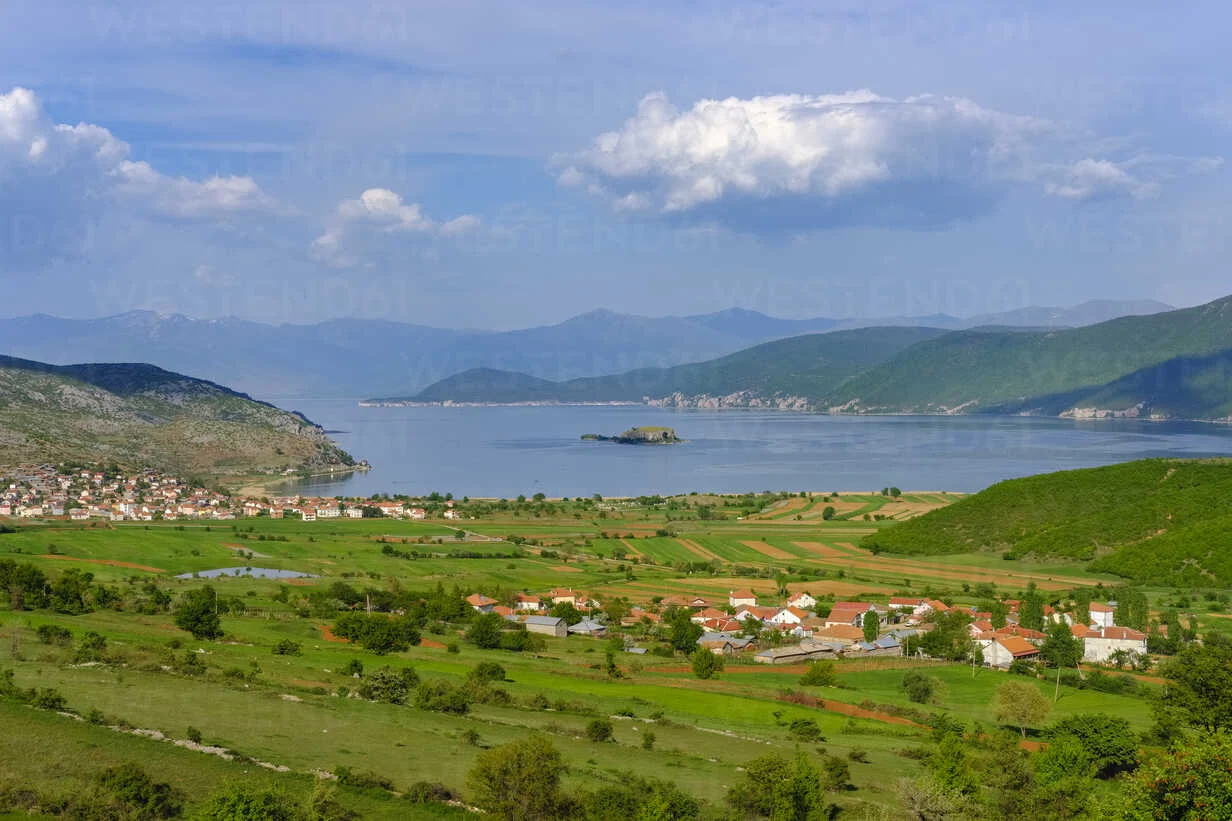
Key Takeaways
- Prespa National Park is a UNESCO-recognized natural treasure nestled at a tri-border region, offering unparalleled biodiversity and cultural richness.
- *Its unique geography* features shimmering lakes, rugged mountains, and lush landscapes that support diverse ecosystems.
- Home to over 1,130 plant species and numerous rare and endangered animals like the Dalmatian Pelican and Balkan Lynx.
- Rich in historical sites that offer a glimpse into ancient civilizations and local traditions.
- The park provides a variety of activities such as hiking, birdwatching, and exploring cultural landmarks for an immersive experience.
Table of contents
- The Location and Geography of Prespa National Park
- Rich Biodiversity and Wildlife in Prespa National Park
- Cultural Significance and Historical Sites in Prespa National Park
- Activities and Attractions for Visitors in Prespa National Park
- Conservation and Environmental Efforts in Prespa National Park
- Practical Information for Visiting Prespa National Park
- Conclusion: Preserving the Unique Appeal of Prespa National Park
Nestled in the heart of southeastern Albania, Prespa National Park is a sanctuary of natural beauty and cultural heritage. This remarkable park is celebrated for its *harmonious blend* of ecosystems and rich history. Its strategic location near North Macedonia and Greece makes it a melting pot of biodiversity and human traditions. Understanding why Prespa National Park is a must-visit means delving into its ecological treasures and cultural landmarks.
The Location and Geography of Prespa National Park
Location of Prespa National Park
Situated in southeastern Albania, Prespa National Park extends close to the borders of North Macedonia and Greece. Its strategic position makes it a *transboundary ecosystem* nurturing diverse flora, fauna, and cultural exchanges. The park is part of a broader protected area network that includes the Prespa Lakes, which are central to regional conservation strategies. For detailed geographical insights, refer to the Albanian National Agency of Protected Areas.
Geography of Prespa National Park
At the core are the stunning Prespa Lakes—Lake Prespa and Lake Ohrid—connected via underground rivers, creating an ecological corridor. Lake Prespa stands at a higher elevation, adding to the area’s hydrological richness. The surrounding mountains, composed of limestone and metamorphic rocks, form a rugged backdrop and variety of habitats. Geological surveys highlight how these formations shape the landscape, supporting lush vegetation and diverse wildlife. This geographical tapestry—*mountain, lake, and lush valleys*—creates a breathtaking environment that captivates visitors and supports abundant biodiversity.
Rich Biodiversity and Wildlife in Prespa National Park
Biodiversity of Prespa National Park
Celebrated as a biodiversity hotspot, the park hosts over 1,130 plant species—*a lush tapestry supporting countless life forms*. Its botanical diversity is complemented by vibrant animal populations, many of which are rare or endangered. This makes Prespa a crucial area for conservation and ecological research, safeguarding the natural heritage for future generations.
Wildlife in Prespa National Park
A notable avian species is the Dalmatian Pelican (Pelecanus crispus), symbolizing the vibrant birdlife. The park hosts around 260 bird species, making it a haven for birdwatchers. It’s also home to approximately 25 mammal species, including the elusive Balkan Lynx. Reptiles and amphibians—23 and 11 species respectively—thrive here, emphasizing its ecological importance as a refuge for diverse and often threatened species.
Conservation efforts in Prespa National Park
Dedicated initiatives focus on protecting habitats and species like the Protected Planet emphasizes, especially the Dalmatian Pelican and Pygmy Cormorant (Microcarbo pygmeus). Transboundary collaborations with neighboring countries aim to preserve this ecological treasure, ensuring the survival of its unique biodiversity and maintaining ecological balance amidst environmental challenges.
Cultural Significance and Historical Sites in Prespa National Park
Cultural Significance of Prespa National Park
This park is *not only a habitat* but also a cultural repository, containing archaeological sites and ancient monuments. According to the Albanian Institute of Archaeology, the area bears remnants of early civilizations, illustrating a deep-rooted human connection through centuries of settlement and cultural evolution.
Historical sites in Prespa National Park
Explore archaeological wonders like the church of Saint Mary in Klloc or the Golemi Bridge, which narrate stories of past eras. These sites are rich in artifacts and architectural marvels, and some may soon gain UNESCO recognition, underlining their cultural significance.
Local communities near Prespa National Park
The local inhabitants preserve age-old traditions and crafts, creating a *living cultural landscape*. Their livelihoods revolve around sustainable practices linked to the park’s natural resources, celebrated in local festivals and cultural events. These traditions foster a deep bond between people and the land, highlighting the importance of community-based conservation. Learn more at the Albanian Institute of Archaeology.
Activities and Attractions for Visitors in Prespa National Park
Activities in Prespa National Park
From *hiking on scenic trails* to birdwatching from designated spots, the park offers diverse outdoor experiences. Water sports in the lakes add to the adventure, providing a perfect blend of thrill and tranquility. Whether exploring mountain paths or paddling on pristine waters, visitors enjoy immersive natural interactions.
Attractions in Prespa National Park
Highlights include hiking to Mount Mali i Thatë for spectacular views, or visiting cultural landmarks like the Eremit of Zaroshka and the Church of Saint Mary. The Tourism Albania website offers itineraries and tips for exploring these treasured sites, assuring visitors a memorable experience amidst stunning scenery and historic architecture.
Hiking in Prespa National Park
With trails suitable for all levels, hikers can explore forests, mountain summits, and lakeshores. The walk to the summit of Mount Mali i Thatë, recommended by the European Wilderness Society, rewards adventurers with panoramic vistas that encapsulate the park’s natural beauty. Local guides provide insights to enrich your journey.
Conservation and Environmental Efforts in Prespa National Park
Conservation in Prespa National Park
This park is central to a transboundary conservation initiative, involving Albania, North Macedonia, and Greece. These efforts focus on habitat preservation, species protection, and sustainable resource management to combat environmental threats.
Environmental challenges in Prespa National Park
Threats include habitat degradation and pollution, as highlighted by reports from the IUCN. Climate change, unsustainable practices, and water pollution require concerted action to preserve this delicate ecosystem. Ongoing projects aim to address these issues and enhance resilience.
Sustainability in Prespa National Park
Efforts by organizations like WWF promote ecotourism, sustainable fisheries, and community involvement, ensuring environmental health while benefiting local livelihoods. The focus is on long-term sustainability driven by inclusive stewardship and responsible tourism.
Practical Information for Visiting Prespa National Park
Visiting Prespa National Park
The best time to visit is during spring or autumn for temperate weather and vibrant scenery. Access is available year-round, with local tourism agencies providing transportation details and park entry regulations. Proper planning ensures a smooth trip.
Accommodation near Prespa National Park
Options range from quaint guesthouses to camping sites, with platforms like Booking.com offering extensive listings. Staying nearby allows for extended exploration and immersion in local traditions.
Getting to Prespa National Park
Accessible via regional roads from Albanian cities and neighboring countries, with car rentals and public transport available. Familiarizing yourself with local regulations and park permits enhances your experience. Visit Albanian Tourism for detailed routes and travel tips.
Conclusion: Preserving the Unique Appeal of Prespa National Park
In summary, Prespa National Park embodies a *synthesis* of ecology, history, and culture that must be cherished. From the stunning lakes and mountains to archaeological wonders and thriving local communities, it offers an *immersive journey* into natural and human heritage. Protecting this invaluable ecosystem requires collective effort—responsible tourism, conservation initiatives, and community engagement all play vital roles.
As visitors and custodians, we hold the power to ensure Prespa’s legacy endures. Exploring its landscapes responsibly and supporting sustainable practices enables future generations to enjoy this extraordinary sanctuary. Join the movement to safeguard Prespa National Park—a beacon of biodiversity and culture for the world to cherish.


0 Comment